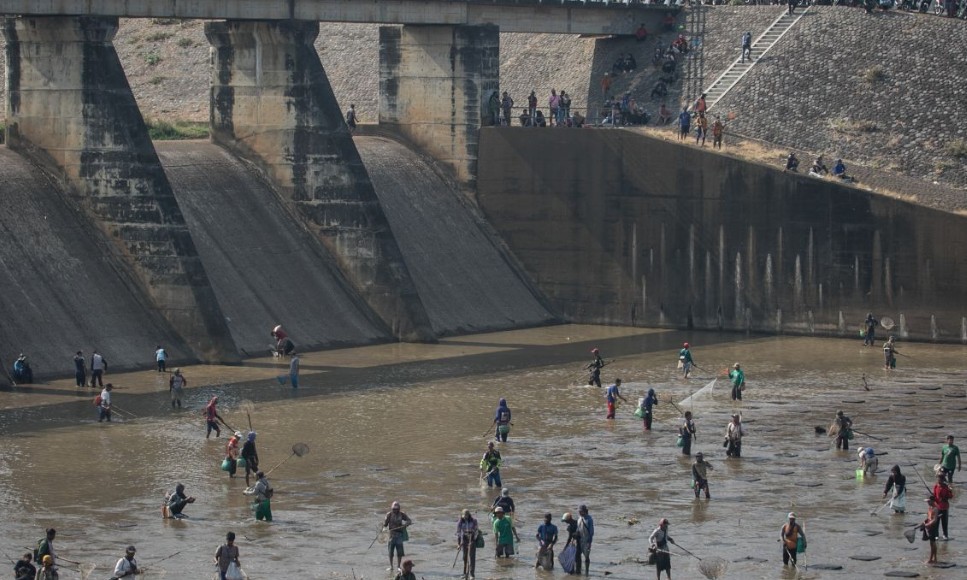The state of Punjab has initiated a reduction in its water supply, leading to a significant water crisis affecting eight districts within the neighboring state of Haryana. This development has escalated the long-standing and complex inter-state water dispute between the two agrarian states, raising serious concerns about drinking water availability and agricultural sustenance in the affected regions of Haryana. The decision by Punjab to curtail the water flow from the Bhakra Dam has triggered alarm bells in Haryana, prompting urgent discussions, accusations of constitutional violations, and a scramble to manage the dwindling water resources.
The eight Haryana districts now grappling with a severe water shortage as a direct consequence of Punjab’s reduced supply are Sirsa, Fatehabad, Hisar, Kaithal, Kurukshetra, Jind, Bhiwani, and Charkhi Dadri. An internal report prepared by Haryana’s Public Health Engineering Department paints a stark picture of the crisis, revealing that these districts are currently receiving a mere 15% of their actual water demand for drinking purposes. Against a total requirement of 4,931.90 crore liters, the department has arrangements for only 764.80 crore liters, leaving a staggering deficit that underscores the gravity of the situation.
The repercussions of this drastic reduction in water supply are already being felt on the ground. According to the Haryana state government, a significant number of water sources, specifically 215, have completely dried up across these eight districts. Consequently, 36 villages in these water-stressed areas are now solely reliant on emergency measures such as the supply of drinking water through tankers. This dependence on temporary and often insufficient measures highlights the precarious situation faced by the residents of these districts, particularly during the scorching summer months.
The issue was brought to the forefront during an all-party meeting chaired by Haryana’s Chief Minister, Nayab Singh Saini, on Saturday. A detailed note shared by the Public Health Engineering Department with the Chief Minister underscored the severity of the crisis and the urgent need for a resolution. The note also highlighted the alarming statistic that 156 out of the total 614 waterworks tanks in these districts have already run dry, further exacerbating the drinking water shortage.

In response to Punjab’s actions, the Haryana government has vehemently protested what it deems a violation of established water-sharing agreements and constitutional norms. Haryana has accused Punjab of unilaterally reducing the water supply from the Bhakra Dam to a mere 4,000 cusecs, a significant drop from the routine release of 8,500 cusecs. This unilateral action, according to Haryana, disregards the decisions made by the Bhakra Beas Management Board (BBMB), the regulatory body overseeing the distribution of water from the Bhakra and Beas rivers. Haryana contends that the BBMB’s technical committee had approved the release of 8,500 cusecs of water to the state on April 23, 2025, a decision that was reaffirmed during the BBMB board meeting on April 30. Punjab’s decision to disregard this agreed-upon release has been met with strong condemnation from Haryana, which views it as an “inhuman, illegal, unjust, and unconstitutional” act.
Adding another layer to the dispute, Haryana has released data spanning the last ten years to counter Punjab’s claims of water scarcity at the Bhakra Dam. According to the data presented by the Haryana government, the water level in the dam as of May 3, 2025, stood at 1555.77 feet, a level comparable to previous years, including 1567.96 feet in 2023 and 1565.26 feet in 2024. Furthermore, the average water discharge in May over the last decade has consistently remained above 9,000 cusecs. This data aims to refute Punjab’s assertion that it lacks sufficient water to meet Haryana’s rightful share.
The Haryana government has urgently appealed for the immediate restoration of its allocated water share and has urged Punjab to comply with the decisions of the BBMB’s technical committee. Additionally, Haryana has called for the urgent desilting of the Gobind Sagar Reservoir, offering to bear its proportional share of the cost, in an effort to improve water storage capacity and ensure a more reliable supply in the long term. The state government has reiterated its commitment to pursuing all available legal and political avenues to secure its water rights, including pushing for the completion of the long-delayed Sutlej-Yamuna Link (SYL) canal, a contentious project that has been at the heart of the water dispute between the two states for decades.
Meanwhile, Punjab has defended its decision by citing its own pressing water scarcity issues. Punjab’s Chief Minister, Bhagwant Mann, has asserted that the state does not have “even one extra drop of water” to spare, emphasizing the drastically low water levels in Punjab’s own reservoirs and the critical condition of its groundwater resources. Punjab has also accused Haryana of having already utilized more than its allocated share of water in the current water year. In a counter-move, the Punjab government boycotted a meeting convened by the BBMB to discuss the water release to Haryana, citing the short notice for the meeting and its intention to discuss the issue in a special session of the Punjab Assembly.
The escalating water crisis has prompted concerns at the national level, with the Union Home Secretary having convened a high-level meeting to address the issue. The central government has urged both Punjab and Haryana to adopt a more flexible stance and has asked Haryana to provide a detailed justification for its water needs to the BBMB. However, despite these interventions, a resolution to the immediate crisis remains elusive, leaving the eight affected districts of Haryana facing a severe drinking water shortage and the looming threat of agricultural distress as the crucial sowing season approaches. The situation underscores the urgent need for a sustainable and equitable solution to the long-standing water dispute between Punjab and Haryana to safeguard the livelihoods and well-being of the people in both states.


